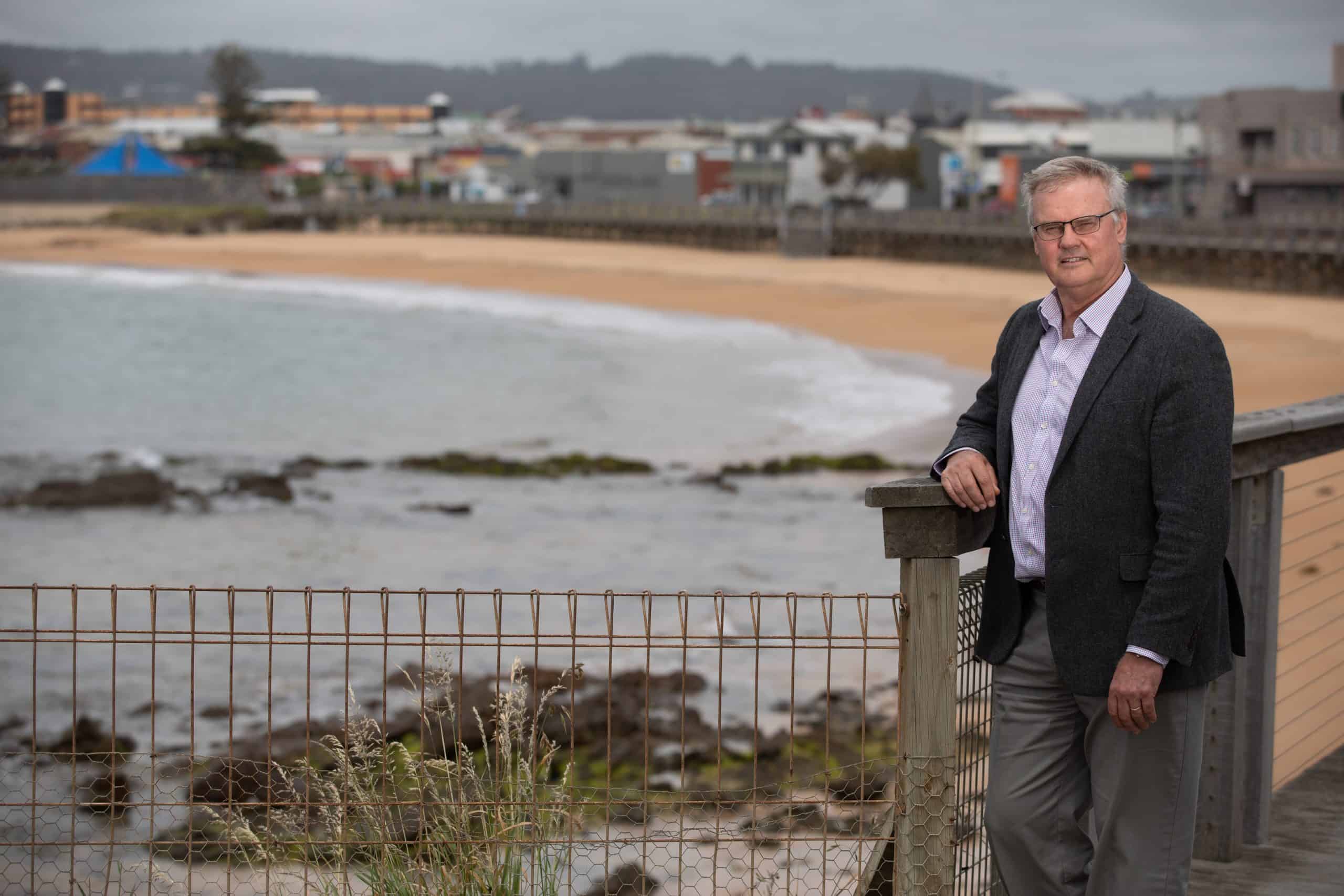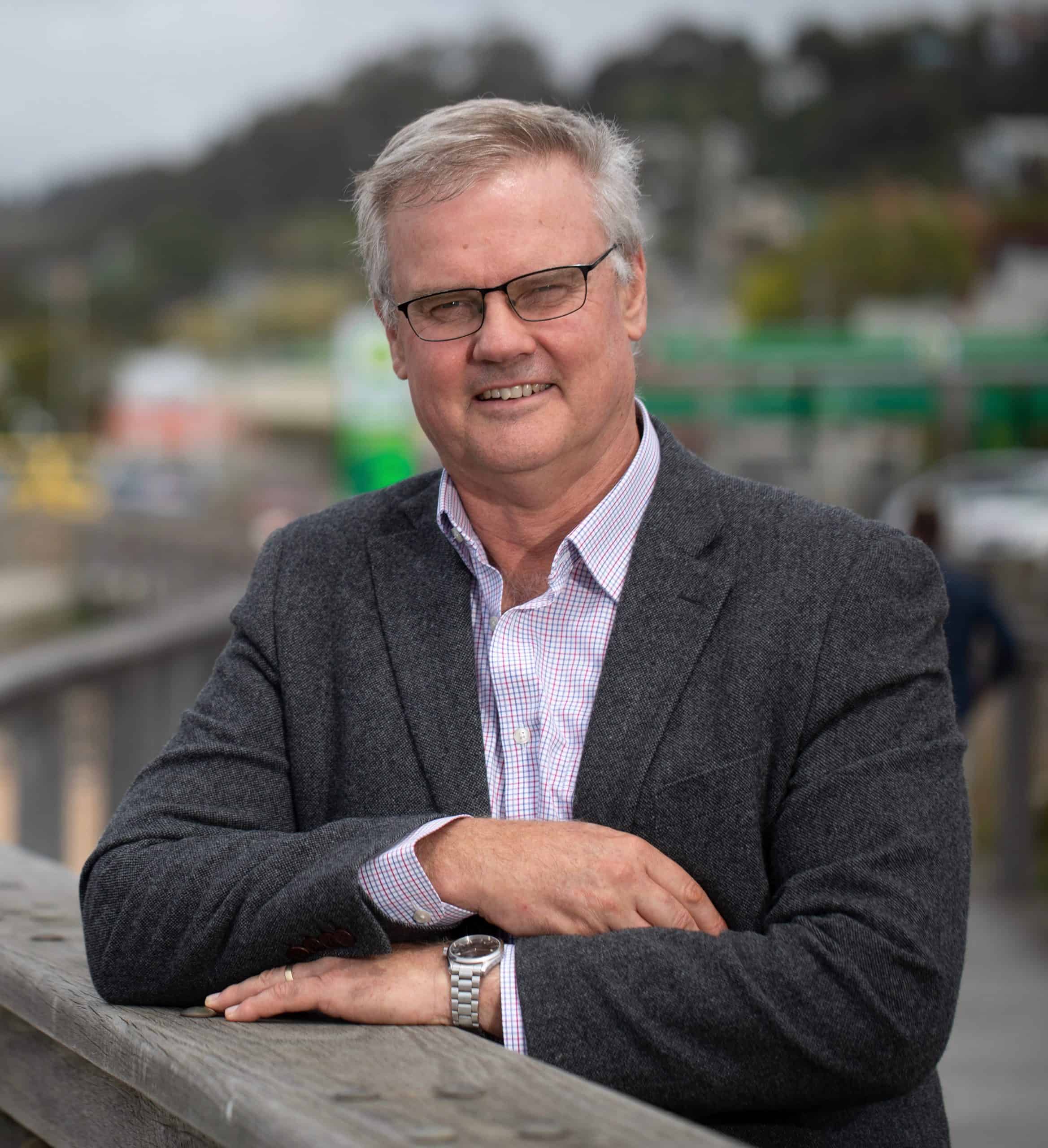Pro Vice-Chancellor finds home nestled between the Dial Range and Bass Strait in Tasmania’s Cradle Coast region
Professor Jim Cavaye has worked with over 140 communities across Australia and beyond. Now it is Tasmania’s turn. He started as Pro Vice-Chancellor at the University of Tasmania’s Cradle Coast campus in October 2019, a new position designed to forge closer ties between the university and the local community.
Professor Cavaye has a soft spot for regional Australia. He was born and bred in regional Queensland and has dedicated nearly four decades to supporting regional community development through his work with the Queensland Government, and later as a private consultant. Among other roles, he has chaired Regional Development Australia in Southern Queensland and chaired international community development committees. So it’s not surprising he and wife Carmel have settled in the seaside town of Penguin, Tasmania, home to only a few thousand folk and a smattering of little penguins.
Professor Cavaye leads the university’s research, engagement and teaching activity and is an internationally recognised researcher, expert, speaker and author.
“What really enticed me here was the innovative and strategic direction of the university,” explains Professor Cavaye. “Their place-based model is about engaging with communities directly in a way that aligns with the region’s opportunities. It’s about being regionally distinctive but globally connected – taking what is special here and building it into our teaching and learning. It’s absolutely fundamental for a regional university to involve the community.”
He arrives at the helm of the Burnie-based campus, which is the north-west base for the Tasmanian Institute of Agriculture, University College and Rural Clinical School and university for social work, education, health and business. It is one of three campuses, with the others based in Launceston and Hobart.

Professor Cavaye is passionate about connecting closely with the locals and providing diverse and flexible learning opportunities to break down the whole misconception of university being out of reach. “We have various education pathways for people from all backgrounds to enter into tertiary education. We offer high quality full degrees, associate degrees, diplomas and programs that prepare people for university study and we are developing short courses and “taster” short courses. There are many ways for people to enter into learning. We also want the university to be a community space as much as a university space – we want people within our walls, being involved with our students and having coffee with us,” explains Professor Cavaye.
Professor Cavaye has a bold vision for social inclusion that is well timed with the development of a new campus at West Park, Burnie in 2021. In the meantime he is developing new strategies for learning, both face to face and online that is more interactive. Having students spread across the region and the nation requires innovative methods for learning delivery. One recent addition is the MILE vehicle (Mobile Interactive Learning Environment), a truck that delivers learning experiences to small communities around Tasmania. Equipped with advanced technology, the vehicle provides an opportunity for video link up, public discussion, short course access and more.
“We want to bring education to the people, rather than expect students to be in a classroom all day. We’re seeking an immersive experience where we get out into industry. Our Rural Clinic School is an excellent example of this where medical students in their fourth and fifth years are placed in communities across our region on their journey towards becoming rural doctors.”
As Professor Cavaye settles into his new role, his sights are set on a transformation that attracts students to the Cradle Coast Campus because of its distinct assets including the natural environment, creativity, advanced technology, agricultural opportunities and tourism potential.

“Incorporating the assets of our region into our learning and engaging with those around us is what grabbed me about this role,” explains Professor Cavaye. “I believe we can create a different kind of university that is highly relevant, really responsive and that contributes to the social, economic and cultural development of the state’s regions.”
“There are so many opportunities here. It’s one of the few regions in the country with a longstanding and very progressive advanced manufacturing sector. That’s testament to how adaptive the sector is.
“We also have a very sophisticated dairy and horticultural industry. Then there are opportunities around tourism development and the arts economy. The region has a big opportunity to harness this creativity and build it as an economic driver,” he adds.
When Professor Cavaye isn’t on campus, he’s out exploring Tasmania with Carmel. He’s also looking forward to visits from their adult children; William who is studying to be a rural doctor in Adelaide, Andrew who is a US-based professional downhill mountain biker and Claire who has just completed a double degree in business and creative industries with sights set on a career in the UK in musical theatre.
Are you interested in making a move? Make it Tasmania.
Find out more about migration pathways and Tasmania’s education system.
If you’re considering studying in Tasmania, visit the University of Tasmania or TasTAFE websites to see what’s on offer.